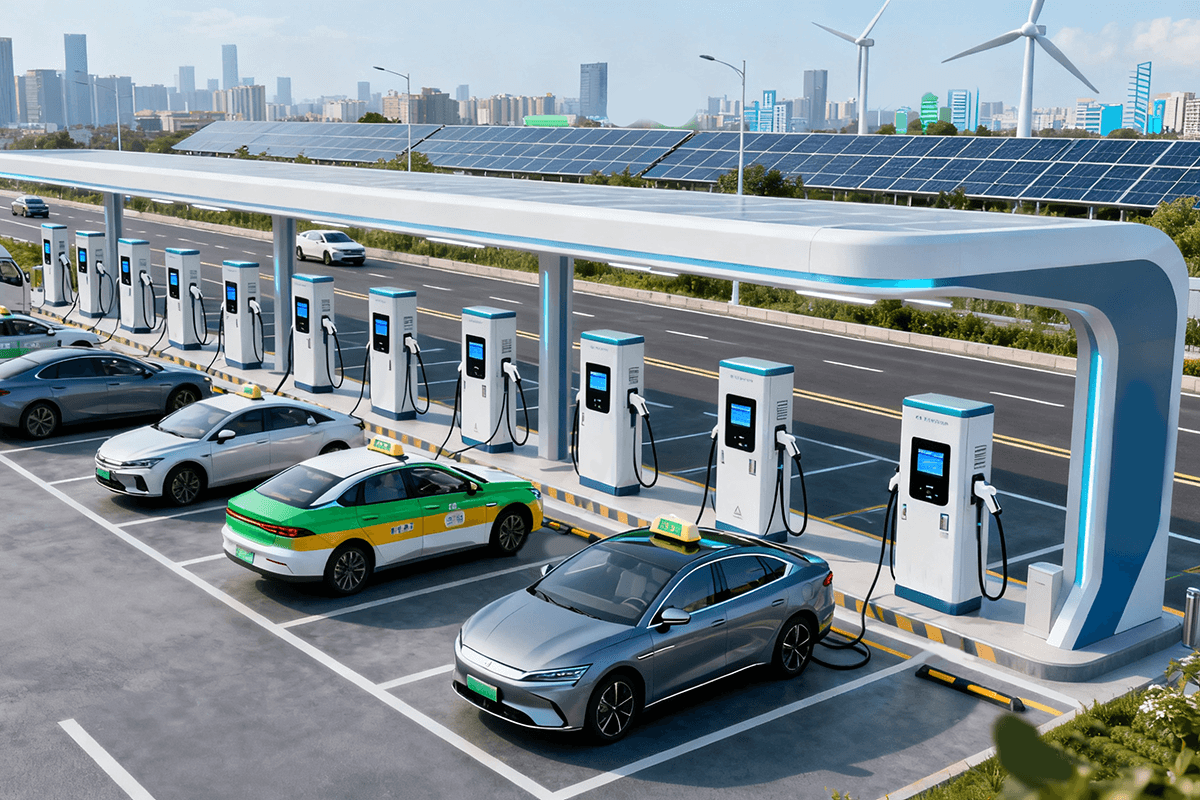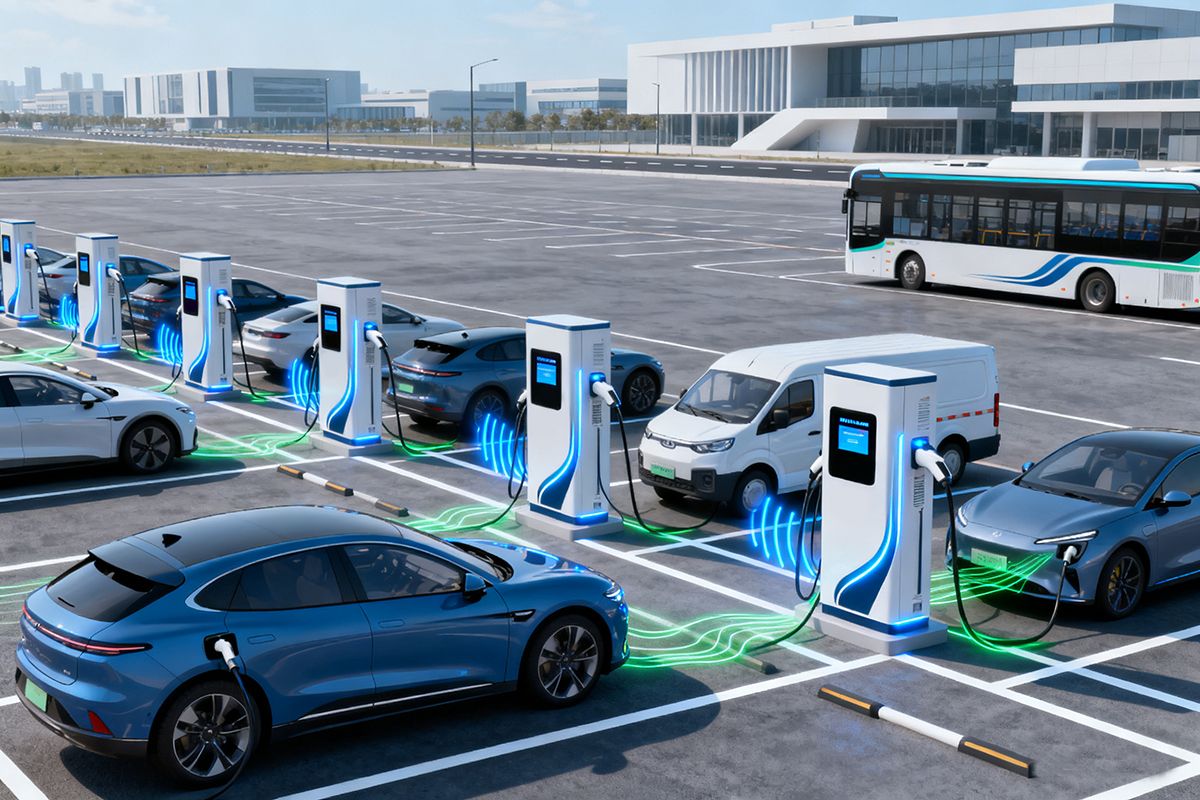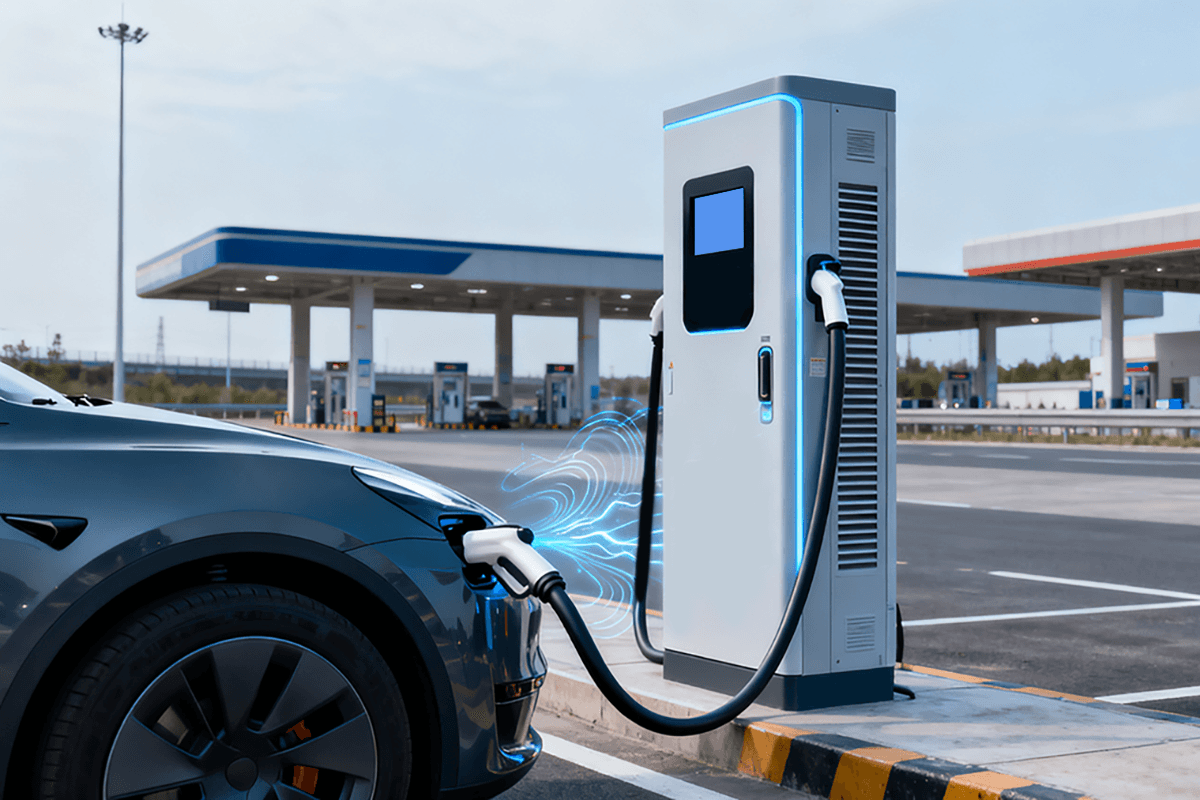1. The Evolution of EV Charger DC Technology
In the global transition toward electric mobility, EV charger DC systems have become indispensable for powering vehicles quickly and safely. Unlike AC units that rely on the car’s onboard inverter, DC chargers deliver direct current directly to the battery, dramatically shortening charging time. Modern EV charger DC floor-standing models are widely deployed in public areas such as highways, city parking lots, and fleet depots, where high throughput and rugged reliability are required. Their durable enclosures, usually rated at IP54 or above, ensure stable operation even under harsh environmental conditions.
As reported by IEA and InsideEVs industry data (2024), global installations of DC charging infrastructure have surpassed 2.5 million units, underscoring the increasing reliance on as the backbone of the EV charging ecosystem.
2. Efficiency, Safety, and Adaptability
A typical dc charging station is more than just a power outlet—it’s a smart terminal that communicates with vehicles and management systems. Advanced units support dynamic load balancing, modular power design, and EV DC fast charging station DC fast charger configurations that can charge most EVs to 80% in under 30 minutes. To meet urban installation demands, manufacturers emphasize compact cabinet design, flexible layout, and standardized interfaces like CCS1, CCS2, GBT, CHAdeMO, or Tesla NACS. Each dc charging station IP54 enclosure is engineered for outdoor durability, integrating surge protection, thermal monitoring, and intelligent fan control for long-term stability.
Furthermore, new-generation EV charger DC for commercial models feature smart payment integration, OCPP connectivity, and remote maintenance via cloud-based management platforms. These functions transform traditional charging points into intelligent, revenue-generating energy assets.
3. Commercial Applications and Market Scenarios
Commercial deployment remains the key growth driver. A EV DC fast charging station with dual connectors allows operators to serve two vehicles simultaneously, optimizing site utilization. Businesses operating logistics fleets or ride-hailing services often prefer EV DC fast charging station with dual gun solutions to maximize operational efficiency.
Fleet operators and property developers are increasingly choosing EV charger DC for commercial installations as part of their sustainability and smart-city programs. These systems can be integrated with renewable sources—such as solar power and battery storage—creating distributed micro-grid networks that reduce energy costs and improve grid resilience. As McKinsey’s Electric Mobility Report (2024) notes, the return on investment for commercial DC charging is rising, especially for operators offering fast, reliable, and connected charging experiences.
4. Innovation Driving the Future
Looking forward, the next generation of EV DC fast charging stations will combine artificial intelligence and predictive maintenance, enabling real-time fault detection and adaptive charging profiles based on vehicle battery health. The integration of OCPP 1.6J and open API interfaces will make EV charger DC systems even more interoperable, ensuring smooth communication with various software platforms. These advancements will empower charging networks to scale sustainably while maintaining compatibility across global markets.
In particular, EV DC fast charging station DC fast charger models are moving toward ultra-fast capabilities above 400 kW, supporting future EVs with 800–1000 V battery architectures—proof that technology is rapidly evolving to match the accelerating pace of electric mobility.
Conclusion
From robust dc charging stations IP54 rated for outdoor performance to intelligent EV charger DC floor-standing systems designed for commercial scalability, each innovation strengthens the foundation of the electric vehicle ecosystem. The continuous evolution of EV DC fast charging stations with dual gun capability and modular architecture ensures flexibility, speed, and safety for tomorrow’s global EV infrastructure. By combining smart design, open standards, and sustainable power management, DC charging is not just powering vehicles—it’s driving the future of clean transportation.




Оставить комментарий
Все комментарии перед публикацией проверяются.
Этот веб-сайт защищается hCaptcha. Применяются Политика конфиденциальности и Условия использования hCaptcha.